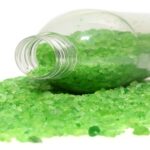Global Levulinic Acid Market
As stated in our extensive report; the Global Levulinic Acid Market accounted for USD 25.5 Million in the year 2021.
The demand for Levulinic Acids from the pharmaceutical, plasticizers, and cosmetics industries is one of the driving forces behind the considerable growth of the worldwide Levulinic Acid market. Delta-amino Levulinic Acid (DALA), a naturally occurring type of Levulinic Acid, is used to make herbicides for farms and lawns. It can also be used to stimulate plant growth. Cigarettes also include l-Levulinic Acid, which binds nicotine to neutral receptors. In addition, pharmaceutical companies use it to make non-steroidal anti-inflammatory drugs such as calcium levulinate and indomethacin, which treat fever. Levulinic Acid is anticipated to expand during the projected period due to its widespread use in end-use industries.

Click To Get a Free Sample On the Research Study
Factors Influencing Global Levulinic Acid Market Growth
The growth of the global Levulinic Acid market can be attributable to the following:
- Due to its use as a food and feed additive, fertilizer, fungicide, plasticizer, coating, and antifreeze, among other applications, Levulinic Acid is a very versatile chemical that finds employment in various end-use sectors. This is fueling market expansion.
- Levulinic Acid is mainly used in agriculture. The market is expanding because of the rising number of plant and crop diseases. Crop and plant damage from diseases, which various plant pathogenic organisms can bring on, is an important source.
- Levulinic Acid is utilized in the precursor process for pharmaceuticals and is also employed as an anti-inflammatory drug, an anti-allergy agent, a mineral supplement, and transdermal patches. This is driving the growth of Levulinic Acid.
- In the following years, rising demand for environmentally friendly chemicals, such as Levulinic Acid, used to create high-performance bio-based plasticizers are anticipated to propel market growth. Levulinic Acid-based plasticizers deliver outstanding performance in applications like PVC rapid fusers.
- Levulinic Acid and its salts, such as sodium levulinate, are utilized in the personal care sector to provide an effective preservative for personal care products. Additionally, the US Food and Drug Administration (FDA) has authorized its usage in personal care products, which has expedited the expansion of the Levulinic Acid market.
- Many rivals are focusing on bringing advances to the production process. For instance, businesses are creating affordable and environmentally acceptable biomass conversion techniques to increase the availability of fossil fuel alternatives.
- The demand for Levulinic Acid is likely to rise as the plastics and polymer sectors seek to increase the flexibility of plastics, notably PVC.
However, the strict rules relating to the components used in personal care products represent one of the major obstacles to the growth of the worldwide Levulinic Acid market.
Asia Pacific region Dominates the Global Market
Geographically, Asia Pacific holds the major market share in the Levulinic Acid market and is expected to continue this trend in the coming years. This is a result of the rapidly increasing demand for Levulinic Acid in cosmetics and agricultural products in nations like China, India, and Indonesia. The derivatives of Levulinic Acid are also used as ingredients in cosmetics like lipsticks and makeup removers. Levulinic Acid and its derivatives are abundantly produced in developing nations like India and China. Additionally, sodium levulinate is increasingly used as a food preservative to extend product shelf life and as a skin conditioner in cosmetics, which is driving up demand for the substance.
Conclusion
Levulinic Acid has favorable effects on the total Levulinic Acid market due to its usage in multiple industries, including medicines, agrochemicals, cosmetics, food & beverages, rubber & polymer, and others.
The well-known players of the Global Levulinic Acid Market include G.F. Biochemicals Ltd. (Italy), Langfang Triple Well Chemicals Co. Ltd. (China), Biofine International Inc. (U.S.), Avantium (Netherlands), Simagchem Corporation (China), Hefei TNJ Chemical Industry Co. Ltd. (China), CSPC Pharmaceutical Group (China), Great Chemicals Co. Ltd. (China) and others.
![[Market Research Reports] – Research Google News Blog | VMR.Biz](https://www.vmr.biz/wp-content/uploads/2022/12/logo-removebg-preview.png)











